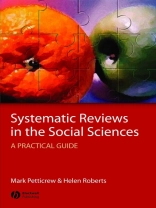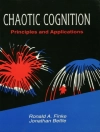Such diverse thinkers as Lao-Tze, Confucius, and U.S. Defense
Secretary Donald Rumsfeld have all pointed out that we need to be
able to tell the difference between real and assumed knowledge. The
systematic review is a scientific tool that can help with this
difficult task. It can help, for example, with appraising,
summarising, and communicating the results and implications of
otherwise unmanageable quantities of data.
This book, written by two highly-respected social scientists,
provides an overview of systematic literature review methods:
* * Outlining the rationale and methods of systematic
reviews;
* Giving worked examples from social science and other
fields;
* Applying the practice to all social science disciplines;
* It requires no previous knowledge, but takes the reader through
the process stage by stage;
* Drawing on examples from such diverse fields as psychology,
criminology, education, transport, social welfare, public health,
and housing and urban policy, among others.
* Including detailed sections on assessing the quality of both
quantitative, and qualitative research; searching for evidence in
the social sciences;
meta-analytic and other methods of evidence synthesis; publication
bias; heterogeneity; and approaches to dissemination.
İçerik tablosu
Foreword (William R. Shadish).
Acknowledgments.
Preface.
Chapter 1: Why do we need systematic reviews?
Chapter 2: Starting the review: Refining the question and
defining the boundaries.
Chapter 3: What sorts of studies do I include in the review?
Deciding on the review’s inclusion / exclusion criteria.
Chapter 4: How to find the studies: The literature search.
Chapter 5: How to appraise the studies: An introduction to
assessing study quality.
Chapter 6: Synthesising the evidence.
Chapter 7: Exploring heterogeneity and publication bias.
Chapter 8: Disseminating the review.
Chapter 9: Systematic reviews: Urban myths and fairy tales.
Glossary.
Appendix 1: The review process (and some questions to ask before
starting a review).
Appendix 2: MOOSE Guidelines.
Appendix 3: Example of flow diagram from a systematic
review.
Appendix 4: Example data extraction form.
Appendix 5: Variations in the quality of systematic reviews.
Bibliography.
Index.
Yazar hakkında
Mark Petticrew is an associate director of the MRC Social
and Public Health Sciences Unit at the University of Glasgow,
Co-ordinator of the ESRC Centre for Evidence-Based Public Health
Policy, and has written widely on systematic reviews.
Helen Roberts is a social scientist, and professor of
Child Health at City University, where she leads the Child Health
Research and Policy Unit. Until 2001 she was Head of R&D at
Barnardos. Her most recent book is What Works for Children
(ed) with Di Mc Neish and Tony Newman.












